
By Brodie Cowburn and Peter McCullough
Moorooduc Primary, nestled in the corner of the intersection of Mornington-Tyabb and Derril Roads, has undergone a huge transformation in recent times. Gone is the old weatherboard structure and the untidy cluster of portables; in their place are a number of well-appointed modern buildings. This is Moorooduc Primary Mark 3; Mark 4 if you count the district’s first attempt to provide an educational facility on Three Chain Road (now the Moorooduc Highway.)
***
The First School (Common School No. 825)
The early settlers of the Moorooduc district were concerned about both their spiritual welfare and the education of their children. A small wooden Presbyterian church, still standing on the Moorooduc Highway, was financed in the early 1860’s by local and district subscribers. It also housed the first Moorooduc school.
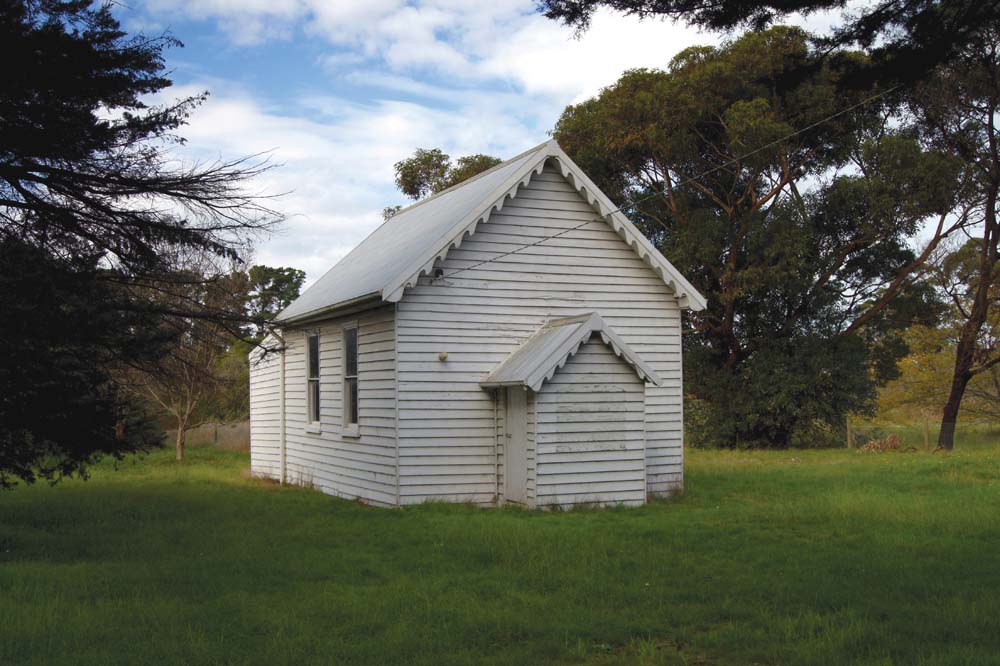
In March, 1865, Captain Edward Blake, who signed himself as Secretary of the Moorooduc School, wrote to the Secretary of the Board of Education requesting “aid and a master’s salary”, and to have the school brought under the Common School Act.
The subsequent application revealed that there was no private school nor any other common school within two miles of Moorooduc, and the number of prospective students within that radius was 18 boys, 19 girls, and 27 “infants” under the age of eight, making a total of 64. The school building was of wood, 24 feet by 16 feet (approximately seven and a half metres by five). During the week a school board was placed outside the building, but was removed on a Saturday and Sunday when the function of a place of worship took precedence over a place of learning. The fees charged for schooling were one shilling for one child, one shilling and sixpence for two, and two shillings for three.
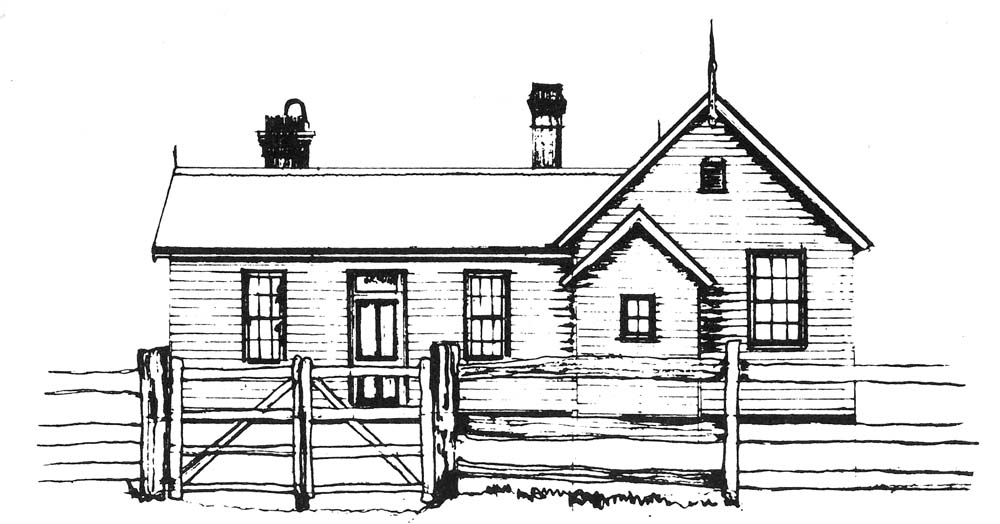
By October no response had been received and Captain Blake expressed his displeasure; “…the people in this neighbourhood are so poor that the last teacher was obliged to leave for want of a sufficiency to support him in respectability, and we fear that the one now in charge of the school might likewise do the same unless Government assistance is shortly obtained…There has been an average attendance of above 20 scholars since 1st January last.”
This effort by the Secretary had the desired effect: it led to a visit by a senior inspector who reported that “…the inhabitants of the area are mainly woodcutters”, that many were labourers rather than farmers, but they would “…remain in the area for some time to come.” He considered the site of the school satisfactory as to sanitary conditions, and in a suitable position. Although there was no residence for the teacher, the school building was in good repair, had good ventilation, drainage, lighting, playground and fence. In view of all the facts, the inspector recommended that aid be granted.
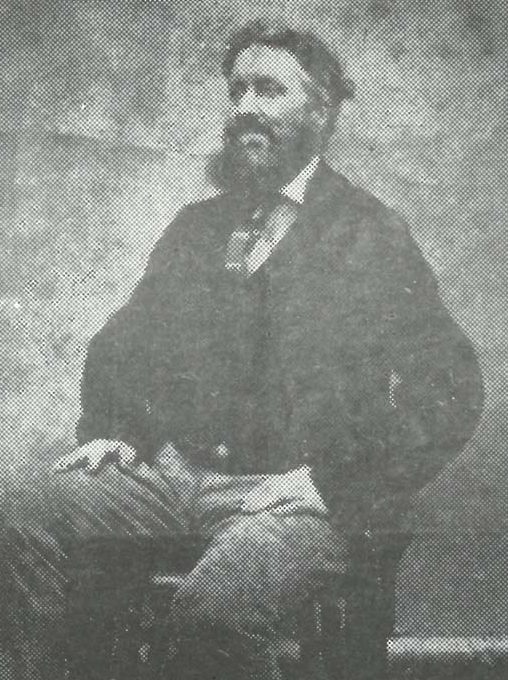
And so the school was officially recognised by the Board and became Common School No. 825. However this did not mean instant action and it was not until September, 1866 that the Board agreed to pay the Head Teacher a salary. Average attendance was 24.
The school continued to function for some years in the old building. As the school numbers rose steadily with the growth of the district, the square pulpit, three large boxes and a teacher’s table, left little room in the small building for the pupils.
During the 1870’s a common problem was the lack of an adequate and assured water supply in schools. At Moorooduc correspondence to the Department on January 31, 1876 stated; “…during the excessive heat of the last few days, the children were wandering about in a most deplorable state in search of water to drink, and the want was felt to such an extent that their sufferings were very great…I would recommend that the spouting be at once fixed to the building and an iron tank provided.” The Department provided the tank but there was some delay in affixing the spouting as the building was not the Department’s property!
A New Beginning (State School No. 2327)
When in 1873 the local committee of No. 825 asked that the Moorooduc school be made a State School under the terms of the Education Act 1872, their request prompted a visit from the District Inspector. His recommendation was to move the school one mile further east “…to place it within reach of the families residing in the north-western part of the parish of Bittern…it is Crown Land, high and dry, and at the junction of main roads…The new school should accommodate 75.”
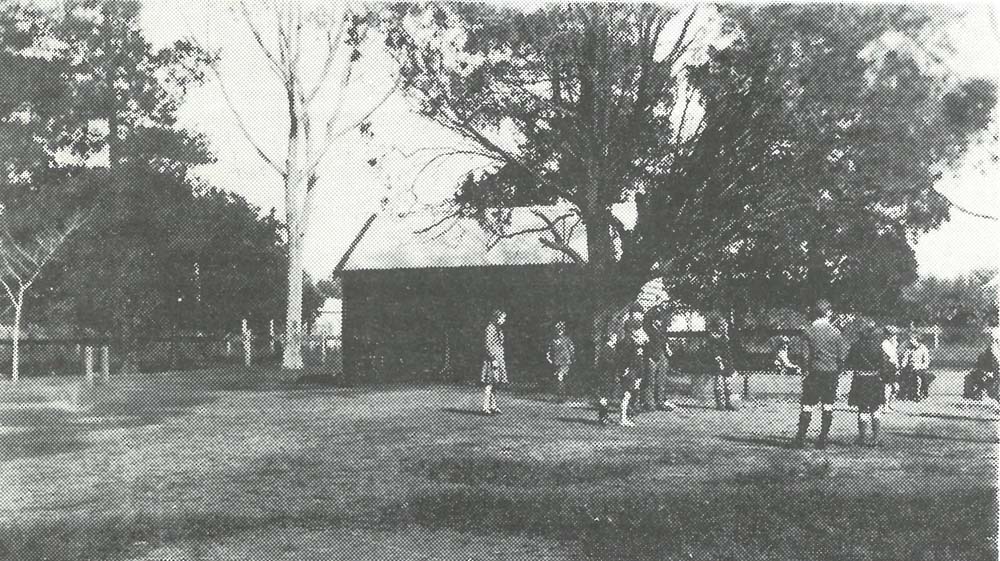
Pending the erection of the building, the Department continued to lease the church at the rate of one pound ($2) per month. During 1877 the Department received many complaints, chiefly from the Head Teacher and concerned parents, regarding the inadequacy of accommodation in the leased building and urging the construction of the new school without delay. Unfortunately there were a number of setbacks before the objective was achieved.
In September, 1877, the Department accepted a tender for the building but it was not taken up. Two months later the Department had to cancel the contract and re-advertise the work. During the delay caused by the failure of the first contractor, a petition was received contradicting the District Inspector’s description of the site and labelling it as “…swampy, and dangerous in the extreme…snakes being numerous.” These petitioners offered an alternative site but, ultimately, their offer was rejected.
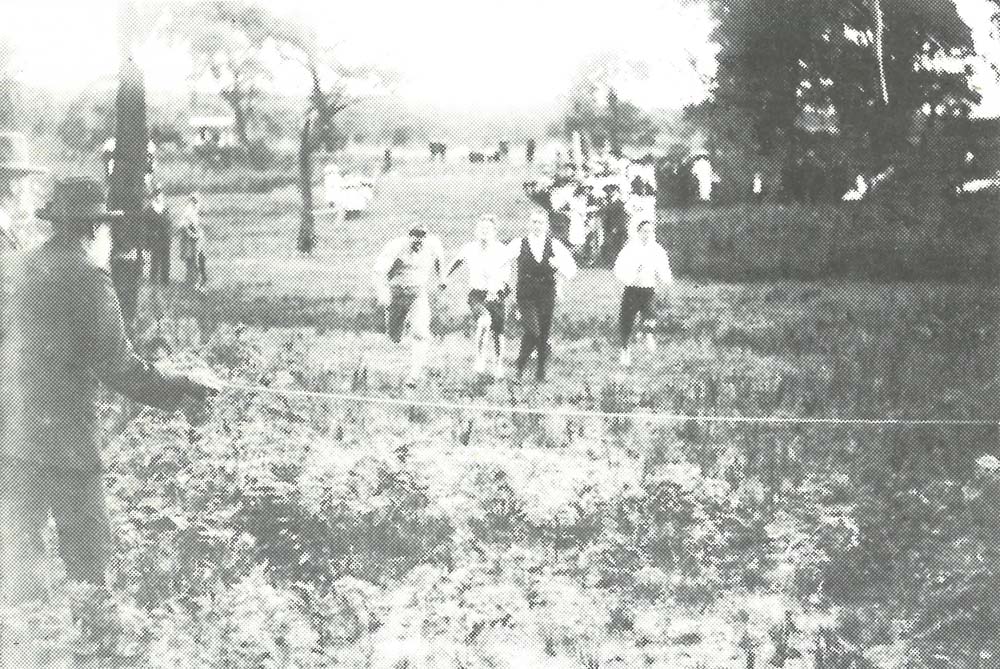
Then in May. 1878 the Head Teacher had to report to the Department that “…the water closets at this school were both maliciously overturned during the night several weeks ago. One of them has since been replaced in a sort of way, but the other is completely gone.”
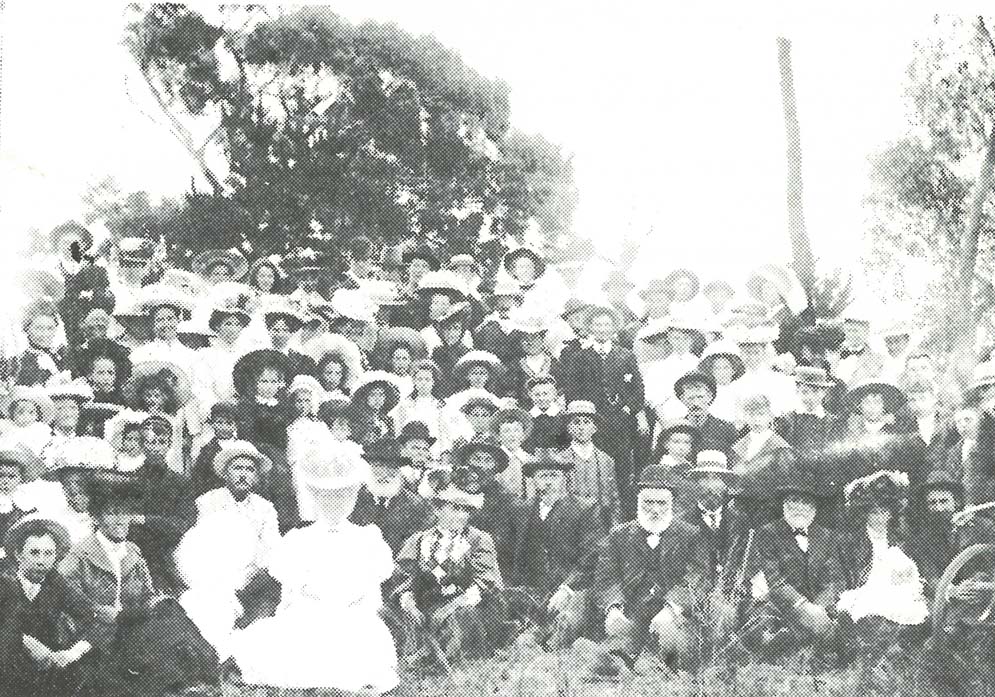
Lack of funds, and the pressing need of other localities, further postponed the building of the Moorooduc school until mid-March 1880 when the tender for 427 pounds, plus 75 pounds for iron, was accepted.
Once the initial setbacks were overcome there was no delay in the building’s construction and the Head Teacher (Mr. Beattie) declared State School No. 2327 open on Monday 1 November, 1880. He was required to pay twelve pounds ($24) per annum for the use of the four roomed quarters attached to the school.
Mr. Beattie suffered many frustrations in his stewardship of the school property. Initial attempts to have the school site fenced failed in February 1881 as the Department had no funds available for the work and the money collected locally was not sufficient. In an effort to make the grounds “sheep proof” the Head Teacher put a wire fence in place for which he was later reimbursed. A second major problem was the school water shortage and in 1888 Mr. Beattie reported to the Department that the water “…in the tanks at the school is reduced to about three hundred gallons and there is no surface water fit for family use…As little rain can be expected for the next four months the prospect is very bad.” Although he pointed out the disturbing sight of thousands of gallons of water running to waste each winter, the Department would not provide additional tanks.
When he retired in 1892 Mr. Beattie attempted to extract compensation for the many improvements he had made to the school site during his tenure; this included the erection of two sheds. The Department’s response was that there would be no compensation but he could take the sheds “…providing no damage was done to the Department’s buildings in the process.”
Fencing, or the lack of it, and the state of the school grounds and outhouses, which were described officially as being “in extremely bad order”, were the subject of much correspondence between the Department and the School Committee for many years. A facetious reference to “Lake Moorooduc” in the records gives a clue to the state of the playground. It was not until 1914 that official approval was given for the erection of a shelter shed, half the cost being covered by local contribution. After much agitation, certain repairs to the school, fence and residence were carried out in 1916 at a cost of 149 pounds, 8 shillings and 6 pence.
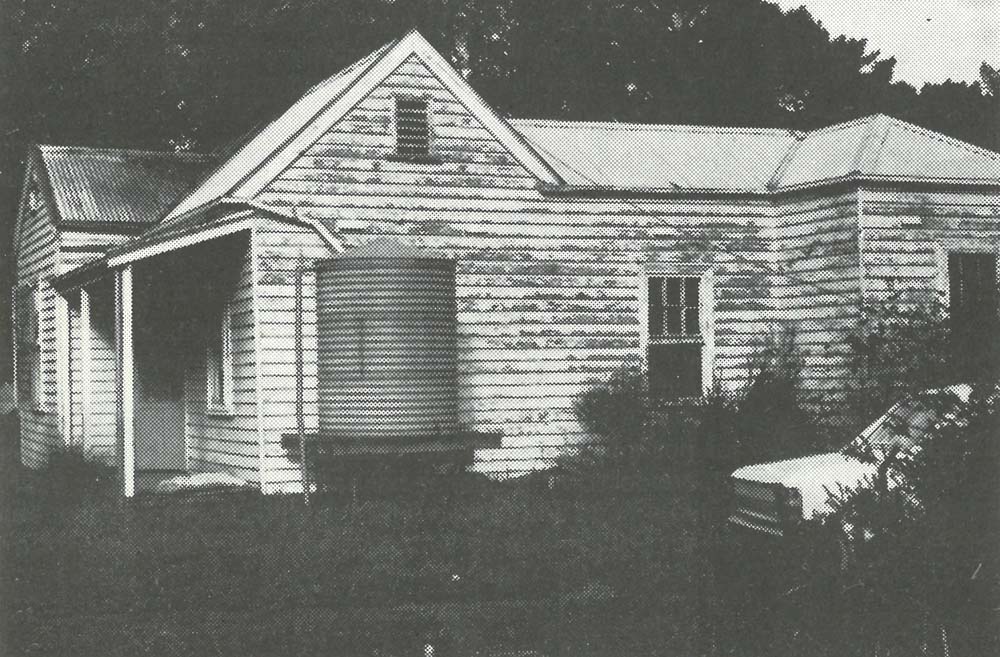
In 1919 the Head Teacher (Mr. Pummeroy) complained of the deplorable conditions under which he and his wife had to live and work. Both the school building and the residence were infested with white ants; “…there are three bad holes in the floor and the walls are in a very bad state owing to this pest.” In the residence “…there is no wash house or bathroom. When we want a bath we have to use a tub eighteen inches in diameter. I think you will agree with me that that is getting cleanliness under very unpleasant circumstances. My wife has to do the washing in kerosene tins on an open fire built outside…there is not sufficient space for a kerosene tin to be placed on top of the stove. My wife has suffered for years from bad health…the outcome of it is that I have to do the lifting. Therefore the washing has to be left to a Saturday so that I can assist…One of the tanks is leaking badly, and the stand of it is riddled with white ants. There are not outbuildings of any kind such as a woodshed. If you want wood dry it must be stored in the kitchen.”
The School Committee, which met each month on the Monday “nearest the full moon”, supported Mr. Pummeroy’s appeal for some action to repair the school buildings. Basic repairs were completed at a cost of 280 pounds by the end of May 1921.
Before the 1920’s ended various improvements were made to the school buildings and amenities were provided which added to the comfort of teachers and pupils. The residence was enlarged, detached from the school building, and enclosed with a paling fence. A cloakroom was added to the school and a verandah to the residence.
While the Head Teacher and the School Committee were battling with material problems, the children were not being neglected; they learned their “three R’s” and sat for the Merit Certificate. They enjoyed the significant days such as the Somerville Show, Empire Day and Arbour Day. “Break-up Day” at the close of the school year was special with a concert in the morning, followed by the presentation of prizes, then sports in the afternoon with the ladies providing lunch in the shade of a large pine tree.
All these happy occasions notwithstanding, one of the great events of the year in Moorooduc in the early twentieth century was the annual Butter Factory Picnic. Both horse and foot races were held and the school children had a holiday so that they could participate. Located at the property “Penbank” in Derril Road to the north of the school, the Butter Factory commenced operations in 1897 but closed in 1908 due to the falling off of dairying on the peninsula and consequent lack of supply.
An attempt was made in 1925 to beautify the schoolgrounds by the establishment of a flower garden. A number of trees were removed and the children tackled the project with enthusiasm. Their reward came with the award of the State Savings Bank prize for best school garden in 1927.
By the 1930’s pine trees were creating a nuisance; tree roots were undermining the residence and needles were blocking the spouting. The boundary fences had fallen into disrepair allowing stray cattle to enter the grounds and cause considerable damage to the garden. The fences were eventually repaired and a contractor was engaged to remove the pines. Another tree near the school gate was removed in 1939 because its damaged condition constituted a danger to the children. This particular tree had been the cause of a tragedy when Mr. McCullagh, a member of the Committee, and widowed father of two children attending the school, was killed while lopping a limb in an attempt to make the tree safe.
In 1944 funds were requested to undertake improvements to fencing and drainage. When no reply was forthcoming, the Committee undertook the tasks by forming a working bee. Subsequently the Head Teacher received a “please explain” for proceeding without permission. His restrained response led to the Department offering a subsidy on a pound-for-pound basis.
By 1945 Moorooduc State School was desperately in need of extra accommodation. Correspondence from the School Committee in that year stated: “…the net enrolment is forty six pupils…The existing school room accommodates eight grades…the Head Teacher and a female assistant both must teach in the same small room.There are no outdoor buildings available to supplement the classroom…The one shed is taxed to its full capacity in housing pupils’ bicycles.”
The applications were renewed year after year with supporting figures of increased attendance to justify action for enlarged premises, but the Department apparently had more urgent matters on its hands and replied with vague, unsatisfactory promises to review the situation.
While he was still waiting for action in February, 1953 the Head Teacher submitted to the Department a long, detailed account of the school’s material deficiencies, in which he stated in strong language that he considered “…the building is deteriorating to such an extent to render it unsafe. I can shake three walls with very little effort.”To make the conditions a little more tolerable the Public Works Department was ordered to supply a kerosene heater to use in the cloakroom, which by this time was being used as a classroom.
Moorooduc State School Mark 2.
At last, in 1954, after nine years of repeated and futile appeal, the Moorooduc school, with its diligent Committee, devoted Mothers’ Club (formed in 1943), its dedicated teaching staff, and concerned local residents were delighted to hear that official approval had been given for the erection of a new school room building and repairs and renovations to the existing structures. The contract price was 2875 pounds and 19 shillings. In March 1954 the school used the Brick Hall for its classes; on 31 May, after ten weeks, the new building was occupied and a fresh era began for Moorooduc State School.
During the years of frustration and “making-do” with inadequate facilities, the morale of the scholars was upheld by those who were committed to their interests. An area which helped to stimulate the school children in a healthy outdoor interest and one which was particularly suitable for the district was a fruit tree nursery associated with the school. This had been established by the Young Farmers’ Club and been assisted by Committee members.
Following the “rebuild” of 1954 many improvements were carried out: new toilets, improved heating, septic tank sewerage, new fencing, modern teaching aids (many supplied by the assiduous Mothers’ Club). All helped to update Moorooduc State School.
However by 1972 another accommodation crisis had emerged. In that year the Education Department was asked to buy about five acres in Moorooduc to build a new primary school, following criticism by parents of the inadequate facilities available for the school’s 65 children. The regular use of the Brick Hall as a supplementary classroom was ruled out because of the danger of traffic and the lack of supervision “if the school was split.”
The pressure was relieved by the arrival of a portable classroom, then another in 1975, and by the centenary year (1980) there were three “relocatables” at Moorooduc. No new school was ever built.
In 1980 when centenary celebrations took place school enrolments had risen to 114 and the historic year saw the demolition of the school residence.
After 1980 the school continued to grow and developed a reputation that prompted parents to send their children there even though they might be outside the “radius.”The school, however, had one shortcoming: it lacked a hall which meant that school assemblies took place in the open, hail, rain, or shine.
Meanwhile, after being in recess for a decade, the Moorooduc scouts and cubs had reformed in 1978. In an earlier phase, when there were guides and brownies as well as scouts and cubs, the Tin Hall had been used. It was now derelict and so the scouts and cubs had no alternative but to use the Brick Hall. This was not entirely satisfactory as there was no storage area for equipment and minor damage to the property was almost inevitable. So in the early 1980’s there were two community groups in Moorooduc in rather desperate need of a hall.
Cometh the hour, cometh the man. Local orchardist John Grierson, a Queens Scout and leader of the 1st Moorooduc in earlier days, had taken on the role of Group Leader of the re-formed troop. For over ten years he had been the President of the School Council at Moorooduc State School. He ascertained that there was a sliver of Crown Land between the rear school boundary and the adjoining market garden. At the time the army was closing the camp at Balcombe and huts were readily available. A hut was long and narrow and not really satisfactory; two huts placed side by side with the adjoining walls removed made an ideal hall. The scouts and school pooled their resources and, after many working bees, the school/scout hall was opened in 1984. It was available for school use every day, and the scouts and cubs held their meetings there as required.
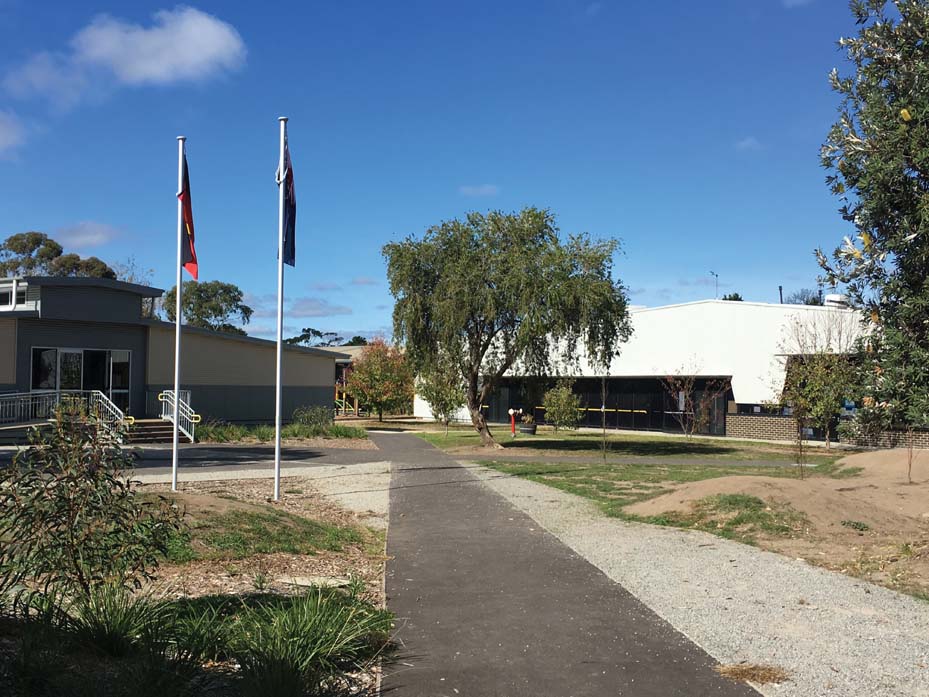
Moorooduc State School Mark 3.
Over the past decade the school has undergone a remarkable transformation as tired old buildings have been replaced, this process culminating in the recent demolition of the old school building and its replacement with a modern administration block.
The first step in the journey towards a new Moorooduc State School started with the demolition of the school/scout hall about a decade ago and its replacement with a modern structure costing $2 million. This was part of the “Building the Education Revolution” programme designed to provide new and refurbished infrastructure (halls, libraries and classrooms) under the Rudd government’s economic stimulus package as a response to the global financial crisis.
Peter Quigley has now been Principal at Moorooduc Primary School for ten years after being there previously for five years as Assistant Principal. When he was Head Teacher at Perseverance Primary School on French Island in the 1990’s, Mr. Quigley would bring the six students to Moorooduc Primary School every fortnight so that they could play sport and ‘socialise’.
Under Mr. Quigley’s leadership the original plan at Moorooduc was to build a completely new school on the site. However the plan did not come to fruition and the revamping of Moorooduc Primary School has essentially taken place one building at a time.
“We had been pressing for new buildings for quite some time and we were very close to achieving our aim around 2009. Then came the Rudd programme and there was some sort of choice as to what sort of building we might get: some schools were provided with new teaching/learning areas while others received halls or gymnasiums. It was all based on your enrolment. I was called to a meeting with my immediate supervisor and was informed that they would provide us with a new hall/art room, and this was being fast-tracked to complement our proposed new school,” he said.
“Then we went through the process of drawing up the plans for a new school and were at the point of preparing tender documents when there was a state election. The new minister didn’t sign the documents so we didn’t get our new school.”
Faced with the choice of holding out for a total rebuild or continuing to improve the school piece by piece, Mr Quigley said that the School Council decided on a compromise which would make everyone happy.
“Accordingly, we have been slowly receiving money to start removal of the old portables and their replacement with newer ones. Then we built the gallery and did up the teaching and learning spaces. When there was another change of government we received funding for our new administration block. The original school building had been ravaged by white ants and would have cost nearly $250,000 to get it back into a state where it could be used for something. It disappeared to make way for the new block. The old building was totally inadequate for teaching in the modern age: it wasn’t big enough for a library and the only other suggestion was to turn it into a school museum. This would have required someone to provide the funds. It wasn’t going to work for us. Nonetheless, some older residents were sad to see the old building go.”
“The School Council’s decision to compromise and adopt a staged development rather than hold out for a total rebuild, has worked out well for us. People are really happy with the teaching and learning spaces, and the office facilities are amazing compared with what we used to have. Our oldest building is our art room , which has been here for 25-30 years. We have twelve classrooms plus the arts/science room. Six of the classrooms were replaced in the past four or five years as part of the regeneration process and other buildings have been given a facelift,” Mr. Quigley said.
So the era of change for Moorooduc Primary School appears to have come to an end, at least for now. The current attendance stands at 272 which is slightly below its cap. Growth beyond this level is restricted by limitations of water supply (still provided by tanks), and the capabilities of the septic sewerage system.
The school’s student outcome continues to be impressive. Accordingly, there is little doubt that Moorooduc State School No. 2327 is achieving its core purpose: “to provide a comprehensive education for all students, enabling them to reach their academic, social, and physical potential in order to thrive and contribute to their future world.”

Acknowledgement: To mark the school’s centenary in 1980 an excellent history was compiled by Leslie Moorhead; this publication has been the source of much of the material used in our article. Thanks to John Grierson and the current Principal, Peter Quigley, for information post-1980.





